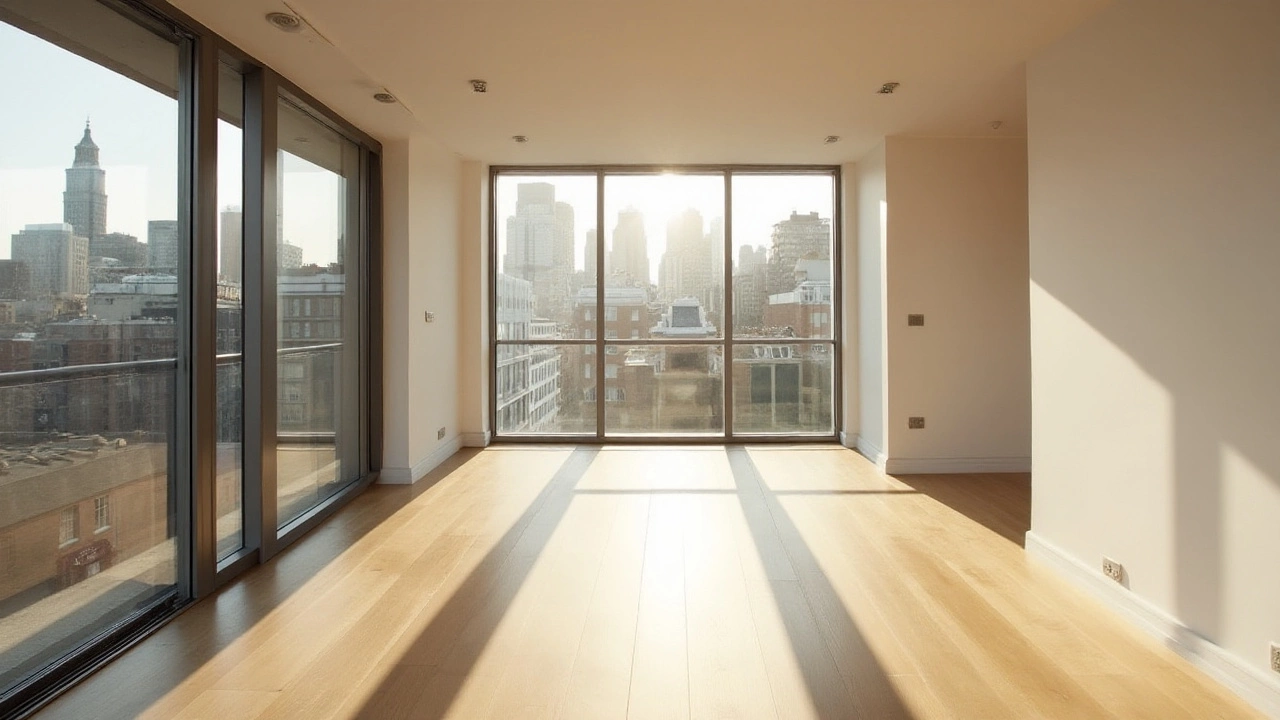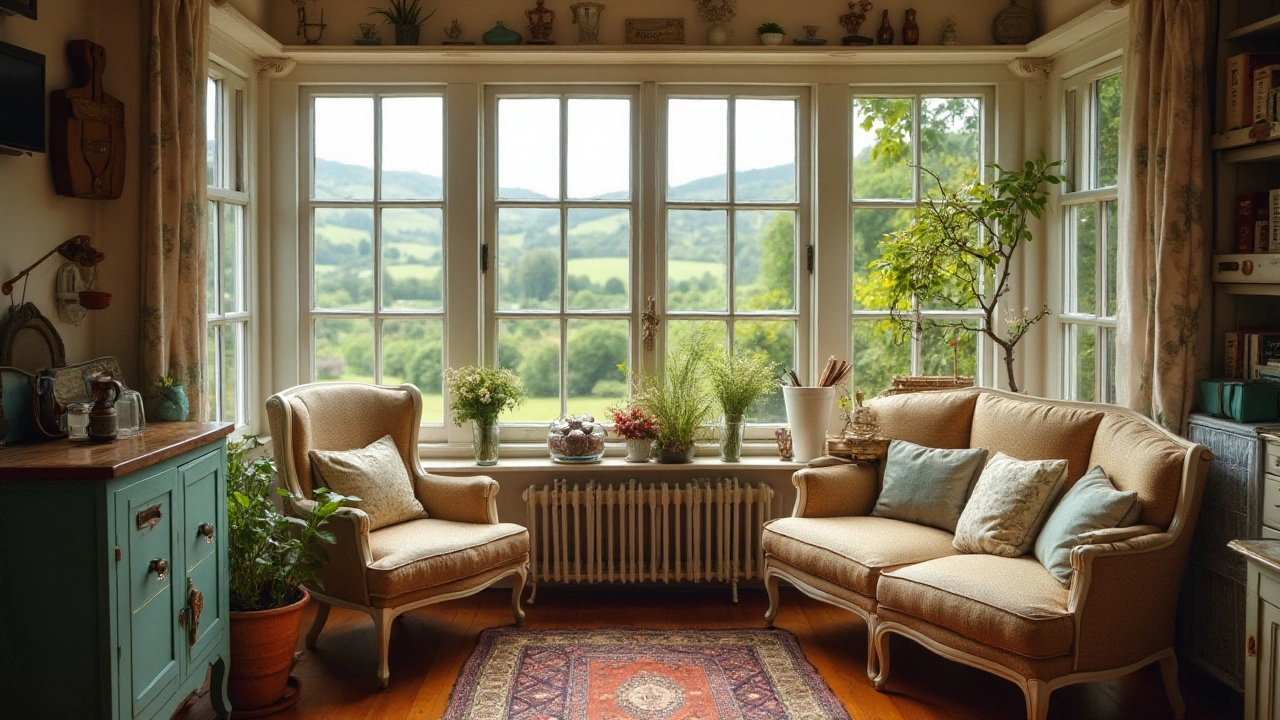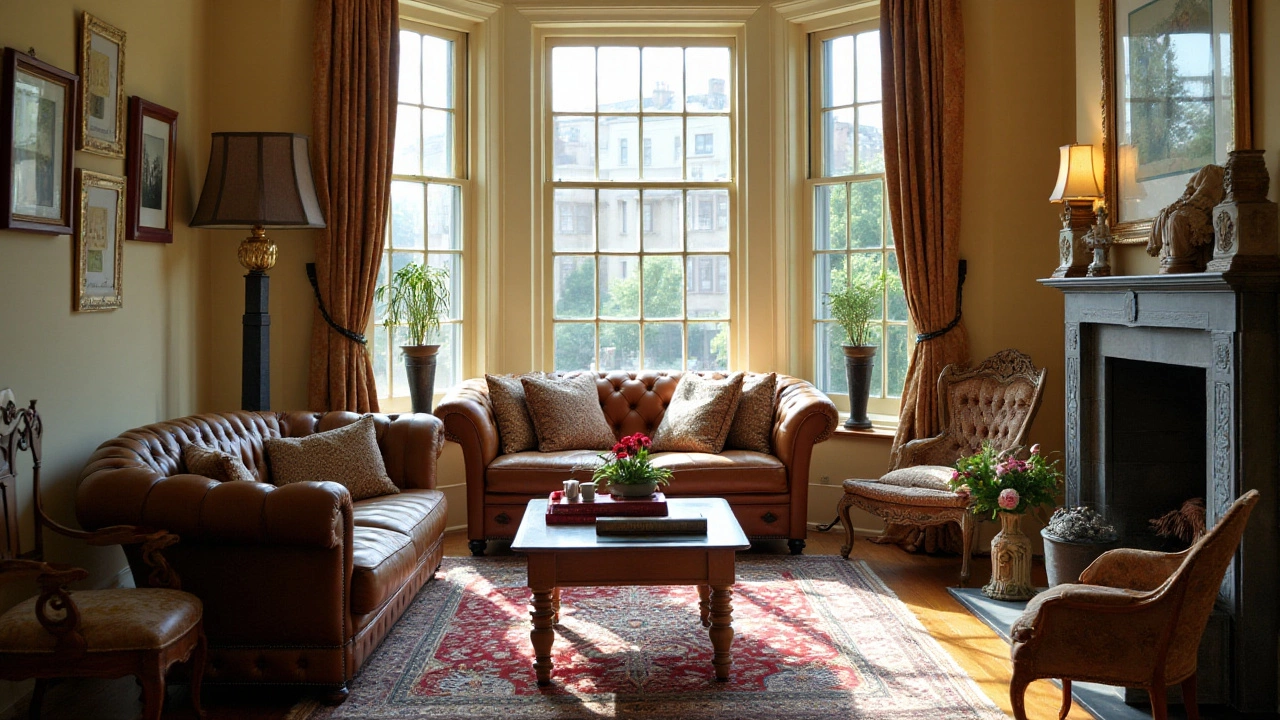The choice to leave windows curtain-free in a room can make a bold statement in your home decor. Minimalism is on the rise, and with it comes the appeal of bare windows that showcase clean lines and uncluttered spaces. But is this aesthetic choice practical for all rooms and lifestyles?
This article dives into the potential benefits and drawbacks of going curtain-less, covering aspects from lighting to privacy concerns. We'll also provide some handy styling tips for those brave enough to embrace this trend, ensuring your room remains both functional and inviting.
- The Minimalist Appeal
- Playing with Natural Light
- Privacy Considerations
- Impact on Room Temperature and Acoustics
- Styling Tips for Bare Windows
The Minimalist Appeal
There's a growing fascination with minimalist decor, where the idea of less really does mean more. Stripping back to essentials can bring a profound sense of peace and simplicity to your living environment. With bare windows, you can follow your home's architectural lines without interruption, often creating a more spacious feel. It's a refreshing approach that highlights the beauty of restraint in design. A room devoid of curtains allows you to focus on other aesthetic components like furniture, wall art, or the harmonious purity of an empty space. This kind of design promotes tranquility, removing visual noise and centered distractions, making your home a haven of calm.
An important part of achieving a minimalist look lies in balancing functionality with form. While curtains usually add texture and warmth, their absence lets natural light wash through glass panes uninterrupted, casting natural shadows that can transform the mood of a room throughout the day. This interaction with light can amplify a room's natural grace, making the entire space seem more dynamic. The idea is not simply to strip away elements but to celebrate what remains. With precision, choosing elements that resonate with simplicity and clarity can redefine elegance.
"Minimalism allows you to live intentionally, stripping away distractions to focus on what truly matters," says renowned interior designer Marie Kondo.
Embracing this trend doesn't mean that every unnecessary item should be purged, but rather it's about selecting pieces that hold significance and value. Homeowners living in urban areas surrounded by picturesque landscapes often choose to let go of curtains to soak in as much serene view from their abode as possible. It offers not only aesthetic beauty but also a mental respite from busy city life, letting nature become part of your interior design. To complement the minimalist appeal, it's essential to adopt a color palette that enhances the simplicity you're striving for. Neutral tones can elevate the light experience, giving your rooms a modern touch without overwhelming the senses.
Minimalism is about a lifestyle choice as much as an aesthetic decision. Those who venture into curtain-less living generally seek to declutter not just their spaces, but their lives. Removing what isn't necessary to focus on priorities is a journey, and within it, every design decision can spark joy. Interestingly, a study highlighted that organized and minimalist environments could increase productivity and relaxation at home. While the choice to go without curtains is personal, it undeniably sets a tone for modern and thoughtful living. Whether for aesthetic integrity, exposure to natural light, or a matter of personal preference, embracing a curtain-free lifestyle can redefine your perspective on interior beauty.
Playing with Natural Light
Natural light is a magical element in interior design. It has the power to transform a room, influencing mood and ambiance. When you shed the constraints of curtains, you're allowing sunlight to play its enchanting role unfiltered. Imagine a room basked in early morning sunshine that progresses to the golden hues of a sunset — each phase brings a unique atmosphere and warmth, unperturbed by fabric barriers. This advantage is especially significant in home decor. Natural light can enhance the vibrancy of colors, broaden the perception of space, and contribute to the overall comfort of those who bask in its glow. Without curtains, rooms are granted a visual expansion, offering a broader view of the outdoors, which can be particularly refreshing in urban settings where space is limited.
The absence of curtains allows for maximum exposure to the sun, which can also aid in energy savings. During colder months, sunlight helps heat the interior, reducing reliance on artificial heating. Conversely, while it might invite the wrath of summer heat, strategic placement of windows and high-quality glass can mitigate excessive warmth. There's also the psychological benefit of natural light. Studies have shown that exposure to natural light can improve mood and reduce stress. This is why many modern 'biophilic' designs focus heavily on maximizing sunlight exposure within living spaces. According to Dr. Mariana Figueiro, a well-known researcher on the effects of light on human health, "Daylight is a natural mood enhancer, and it can also improve our cognitive functioning."
However, while playing with natural light, one must consider privacy. In neighborhoods where buildings stand shoulder-to-shoulder, having an open view can sometimes feel like living in a fishbowl. Strategically placed furniture or plants can offer some privacy without sacrificing light. Using window films that allow light while obscuring visibility can be a good compromise, ensuring that the room remains bright and inviting. For those still hesitant, mix-and-match options exist. A combination of sheer curtains or blinds allows the flexibility of inviting light while offering adjustable privacy when needed.
| Pros | Cons |
|---|---|
| Enhanced Vibrancy | Privacy Concerns |
| Energy Savings | Potential Overheating |
| Mood Enhancement | Potential Furniture Fading |
In the quest to make the most of natural light, balance is crucial. Architects often recommend placing windows in such a way that you harness the morning sun for warmth but avoid the harsher mid-day glare. North-facing windows are particularly beloved for their gentle, indirect light, providing illumination without the accompanying heat. Embracing the lack of curtains can redefine the essence of a room, allowing it to breathe freely in light's embrace. For the ardent minimalists or those looking to invite the outside in, playing with natural light remains an intriguing endeavor in the landscape of room design.

Privacy Considerations
When contemplating whether to forgo curtains, one of the biggest concerns for many homeowners is privacy. Windows provide a view into the soul of your home, and leaving them bare means accepting that what’s inside is part of the street’s tapestry. Especially in urban areas, where buildings stand shoulder to shoulder, the absence of curtain ideas may leave inhabitants feeling exposed, like actors on a stage without a curtain to hide behind when the scenes get too dramatic. While the aesthetic might be appealing, the idea of constant visibility isn’t always comforting.
Finding a compromise between maintaining your home's style while ensuring privacy is usually a balancing act. For those living at ground level or with windows that face directly onto busy streets, having some form of visual barricade is non-negotiable. This is where partial covers, like frosted glass film or artfully placed plants, come into play. These solutions minimize exposure without fully covering the window, allowing you to maintain some connection to the outside while shielding those inside from prying eyes.
Another factor to consider is the time of day and the activities taking place within the room. In the evening, illuminated interiors act as screens to the outside world, broadcasting the activities inside to the street. Utilizing smart glass technology, which can be adjusted from clear to opaque with the flip of a switch, offers a modern solution. Although this tech can be costly and might not fit every budget, it’s an innovative way to maintain privacy without sacrificing the sleek, curtain-less aesthetic.
It's also interesting to note that in residential zones with restrictive homeowners' associations or historical sites, there might be regulations governing what can and cannot be placed in windows. Consulting such guidelines beforehand is prudent. This precaution ensures that your choice aligns with any aesthetic or functional expectations they have set. A quick review can prevent future headaches from unexpected notices pointing out violations.
Annie Selke, renowned interior designer, once remarked, "Design shouldn't endanger privacy; it should smartly enhance it." This quote emphasizes the need for creative solutions that respect privacy while still contributing to decor.
The room design you choose will ultimately determine how privacy solutions mesh with your space, so careful planning is essential. Including privacy panels or shutters can add a classic touch to a modern space or contribute to an eclectic mix, creating a harmonized balance between style and discretion.
Finding the right method of balancing visibility with privacy is crucial to achieving a harmonious home environment. Selecting the proper approach ensures not only the integrity of your aesthetic vision but also peace of mind from knowing you’ve addressed privacy with careful consideration. It’s a decision as much marked by the nuances of home decor as it is by the practicalities of everyday living.
Impact on Room Temperature and Acoustics
Deciding to forgo curtains in a room does more than just alter the visual appeal; it can significantly influence both room temperature and acoustics. Windows without curtains are like blank canvases that allow an unobstructed interaction between the indoors and outdoors. This interaction can create a dynamic environment as natural light floods into the space, but there are practical considerations to be aware of – especially when it comes to temperature and sound.
Without the insulating layer that curtains provide, rooms may experience more extreme temperature variations. In the summer, sunlight beaming directly into a room can rapidly elevate the temperature, making it feel warmer. This effect is sometimes called the 'greenhouse effect,' where the sun heats the room faster than the heat can escape. Conversely, in the winter, large windows without thermal curtains may lead to heat loss, resulting in chilly drafts. According to Energy.gov, windows are responsible for 25% to 30% of residential heating and cooling energy use, meaning that curtains can play a crucial economic role.
Acoustically, curtains don’t just look pretty; they absorb sound waves, preventing echoes and reducing noise levels. A room devoid of curtains might experience a sharp increase in ambient noise, as windows themselves reflect sound rather than soaking it up. If your home is located in a bustling neighborhood, this could be a serious downside. A study conducted by the Salford Innovation Research Centre found that fabric and soft furnishings improve sound absorption, hence rooms without curtains might require additional sound-proofing measures.
“Curtains offer more than just privacy; they have a multifaceted role in environment control,” says interior designer Amelia Markham.
If you're determined to embrace the clean, open look of a room without curtains, consider incorporating alternative methods to regulate temperature and acoustics. Installing window films can help reduce heat penetration while still allowing ample light. Additionally, strategically placing rugs, plants, or decorative partitions can help in sound absorption, mitigating echoes and reverberations. Balancing aesthetics with these practical aspects ensures that your space remains comfortable and enjoyable throughout the seasons.

Styling Tips for Bare Windows
When opting for bare windows, the focus shifts towards creating a seamless blend between the indoors and the outdoors. This minimalist style can significantly open up your space, allowing natural light to flood your room and create an airy atmosphere. The absence of curtains means windows themselves become a focal point, urging you to consider the architecture and view as part of your decor.
To begin with, consider installing window trims or painted frames that offer a sharp contrast to the surrounding walls. This simple trick adds depth and frames the outdoor view as an integral part of your room's aesthetic. For those concerned about privacy, opting for frosted glass or window films can be a brilliant alternative without compromising light.
Another terrific method to add personality is by dressing the space around the windows. Think about positioning furniture strategically, such as placing a statement chair or a sleek console table nearby. Artwork or floating shelves on either side can also help define your window area, providing visual interest and framing the view.
Plants are fantastic companions for no-curtain setups. Arrange potted plants along the sill or allow creeping vines to climb around the window frame. Not only do they soften the starkness of an exposed window, but they also enhance your room with a touch of nature, making it feel more inviting.
In terms of lighting, install wall sconces or pendant lights near the windows. These can highlight that area during evening hours while maintaining a cozy atmosphere inside, acting as a substitute for the softening effect that curtains often provide.
For a more polished look, consider using shutters or wooden blinds that can be adjusted for light and privacy without obscuring the window frame entirely. This tactic offers a degree of flexibility that is both functional and visually appealing. According to interior designer Mark D. Sikes, "A home should feel collected, rather than decorated." Such elements can contribute to a cultivated look.
During colder months, if you notice a draft or wish to retain heat, consider applying thermal insulation films over the windows. This choice provides a sleek alternative to thick curtains and helps with energy conservation without sacrificing the open feel.
Home decor enthusiasts should remember that the key to utilizing bare windows successfully lies in balance. Without curtains, the vistas you expose play a crucial role, and their interaction with your interior environment must be thoughtfully curated to achieve harmony and comfort.
